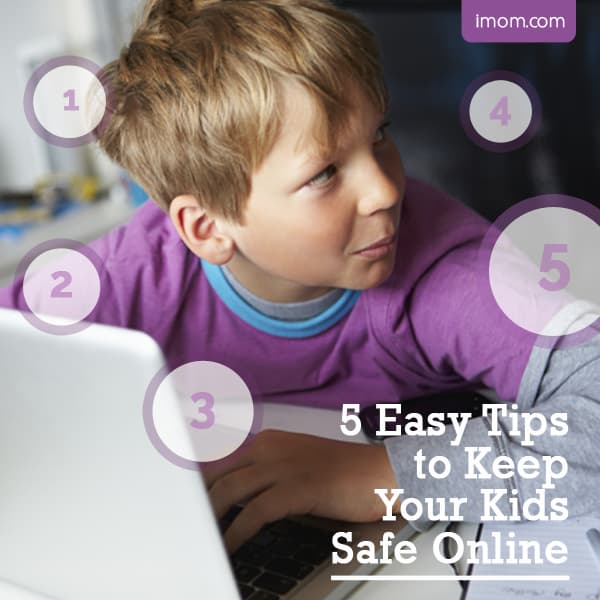I watched my second grader chatting with someone on a teacher-approved online game—one we paid money for. “Who are you talking to?” I asked her, thinking it was a classmate. “I don’t know,” she said. “Just some person playing.”
Eek! Just some person? This was a wake-up call for me; I had let down my guard on games I thought were “safe.” But let’s get real. If they’re online, no games are truly safe. The thing is, we can’t look over our kids’ shoulders all the time. These games aren’t going anywhere and a lot of kids use them to socialize. So let’s keep them as safe as possible with these 5 things to teach your kids about gaming safely.
1. Players who chat are not always kids your age.
One of the most important things to teach your kids about gaming is that “CutiePie999” might not actually be a cutie pie. That young-sounding screen name might be connected to an adult or even computer-generated. Quick chats pop up in order to share information, gain resources, or just be social. However, chats can take a turn for the worse really quickly. In-game bullying, bad language, and even predators can pop up at any moment.
Check the settings on your child’s devices, as well as within each game. Set it up so your kids can chat only with people they know in real life. And get them off the headset so you can hear what others are saying.
2. It’s easy to become a screen zombie.
This is a joke I have with my kids, but I tell them they need to take breaks so they don’t become screen zombies! They laugh, but they know what I mean. Too much screen time with no breaks changes their demeanor. They become irritable and hyped-up, crying or yelling at the game, or simply stop paying attention to the world around them (“Can you HEAR me talking to you?”). They are also tempted to snack mindlessly—and they aren’t reaching for the celery either.
Force your child to take breaks every 30 to 60 minutes, eliminate snacks when gaming, and when you can, choose games that require movement.
3. The world is fake, but the money is real.
Have you heard of “freemium” games? These are games like Fortnite that are free to download but loaded with invitations for in-game purchases that promise to enhance the experience. With a tap or two, you’ve got a charge on your credit card. And while that stinks, the real problem may be a disconnect in the child’s perception of money. Kids (especially younger ones) don’t recognize the difference between spending real money and pretend money. The virtual gaming world is unreal in every way but this one—the money is real.
Again, the settings on the device or within the game will allow you to control these purchases, but don’t forget to educate your child in the money matters of the real world. If your child wants to make in-app purchases, or buy the paid version of an app, use iMOM’s printable App Request Form.
4. Watch for sneaky ads.
Let’s say you approve a game your child wants, even play with him or her for a while to make sure it’s age-appropriate, and then a few minutes later, an ad pops up. Aside from being annoying, some of these ads are not age-appropriate. For example, the fine print in the app store for a game that is ages 9+ says “may contain cartoon, fantasy, or realistic violence, and infrequent or mildly mature suggestive, or horror-themed content which may not be suitable for children under the age of 9.”
Oh, so it’s OK for my child to watch some cartoon gushing blood and a woman with large breasts as long as it’s “infrequent?” I don’t think so. The only way to avoid this is to read the details under the ratings. Go the extra mile to check out the ads your child is being exposed to, and when possible, choose games that have no pop-up ads.
5. Be on the lookout for precursors to addiction.
Even if you had no screen time boundaries in place, there are kids who wouldn’t become addicted. But some kids are more prone to gaming addictions than others. Be on the lookout for precursors to addiction, like extreme emotional shifts that center around gaming, withdrawal symptoms when not playing, a preoccupation with a game (when your child talks about nothing else), poor personal hygiene, physical problems like neck pain and headaches, isolation, or declining interest in school or sports. Be proactive about game addiction by setting up boundaries for your child.
What are some other things to teach your kids about gaming safely? And how do you protect against these dangers?











